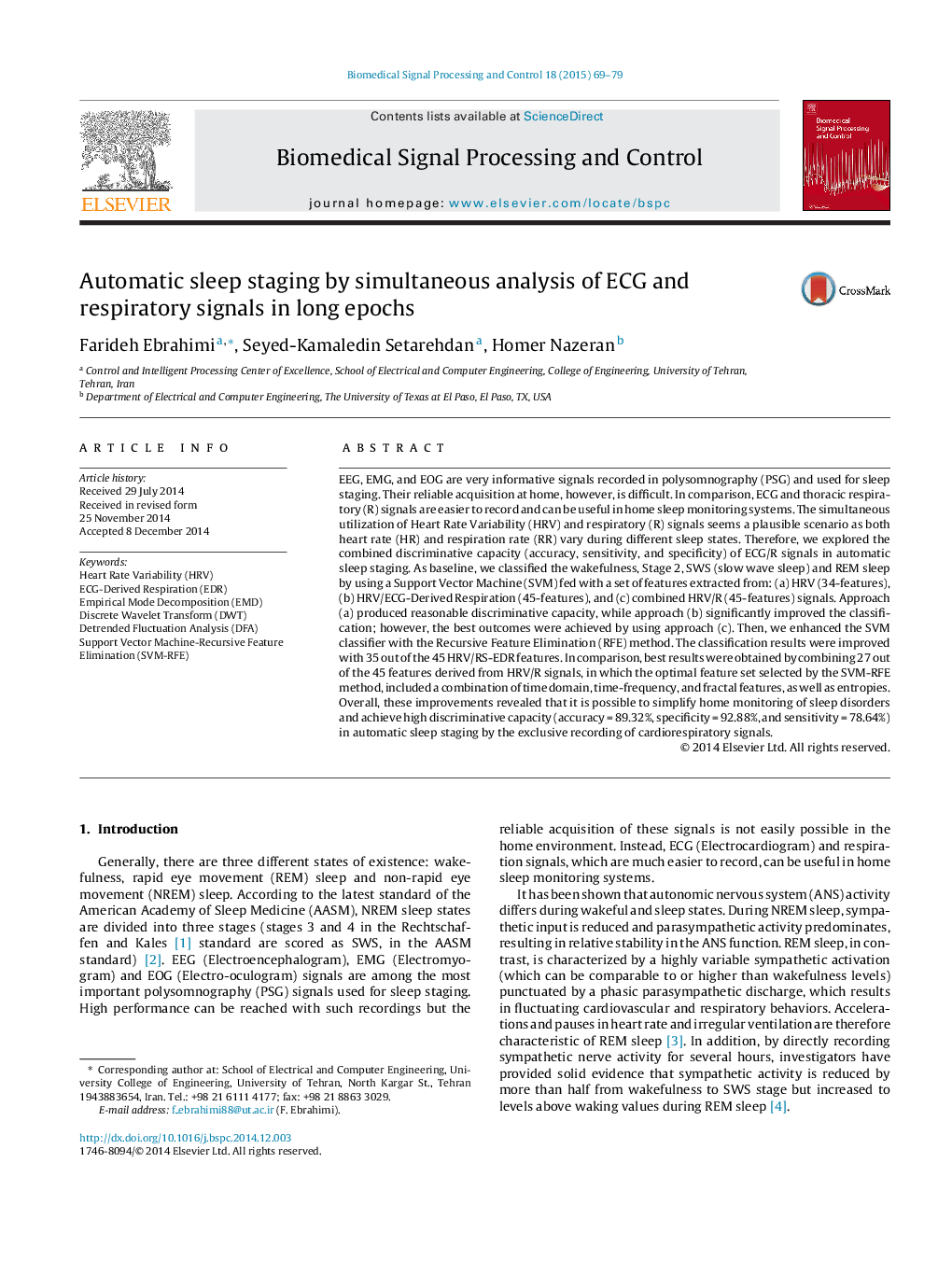| کد مقاله | کد نشریه | سال انتشار | مقاله انگلیسی | نسخه تمام متن |
|---|---|---|---|---|
| 6951365 | 1451662 | 2015 | 11 صفحه PDF | دانلود رایگان |
عنوان انگلیسی مقاله ISI
Automatic sleep staging by simultaneous analysis of ECG and respiratory signals in long epochs
دانلود مقاله + سفارش ترجمه
دانلود مقاله ISI انگلیسی
رایگان برای ایرانیان
کلمات کلیدی
موضوعات مرتبط
مهندسی و علوم پایه
مهندسی کامپیوتر
پردازش سیگنال
پیش نمایش صفحه اول مقاله

چکیده انگلیسی
EEG, EMG, and EOG are very informative signals recorded in polysomnography (PSG) and used for sleep staging. Their reliable acquisition at home, however, is difficult. In comparison, ECG and thoracic respiratory (R) signals are easier to record and can be useful in home sleep monitoring systems. The simultaneous utilization of Heart Rate Variability (HRV) and respiratory (R) signals seems a plausible scenario as both heart rate (HR) and respiration rate (RR) vary during different sleep states. Therefore, we explored the combined discriminative capacity (accuracy, sensitivity, and specificity) of ECG/R signals in automatic sleep staging. As baseline, we classified the wakefulness, Stage 2, SWS (slow wave sleep) and REM sleep by using a Support Vector Machine (SVM) fed with a set of features extracted from: (a) HRV (34-features), (b) HRV/ECG-Derived Respiration (45-features), and (c) combined HRV/R (45-features) signals. Approach (a) produced reasonable discriminative capacity, while approach (b) significantly improved the classification; however, the best outcomes were achieved by using approach (c). Then, we enhanced the SVM classifier with the Recursive Feature Elimination (RFE) method. The classification results were improved with 35 out of the 45 HRV/RS-EDR features. In comparison, best results were obtained by combining 27 out of the 45 features derived from HRV/R signals, in which the optimal feature set selected by the SVM-RFE method, included a combination of time domain, time-frequency, and fractal features, as well as entropies. Overall, these improvements revealed that it is possible to simplify home monitoring of sleep disorders and achieve high discriminative capacity (accuracy = 89.32%, specificity = 92.88%, and sensitivity = 78.64%) in automatic sleep staging by the exclusive recording of cardiorespiratory signals.
ناشر
Database: Elsevier - ScienceDirect (ساینس دایرکت)
Journal: Biomedical Signal Processing and Control - Volume 18, April 2015, Pages 69-79
Journal: Biomedical Signal Processing and Control - Volume 18, April 2015, Pages 69-79
نویسندگان
Farideh Ebrahimi, Seyed-Kamaledin Setarehdan, Homer Nazeran,